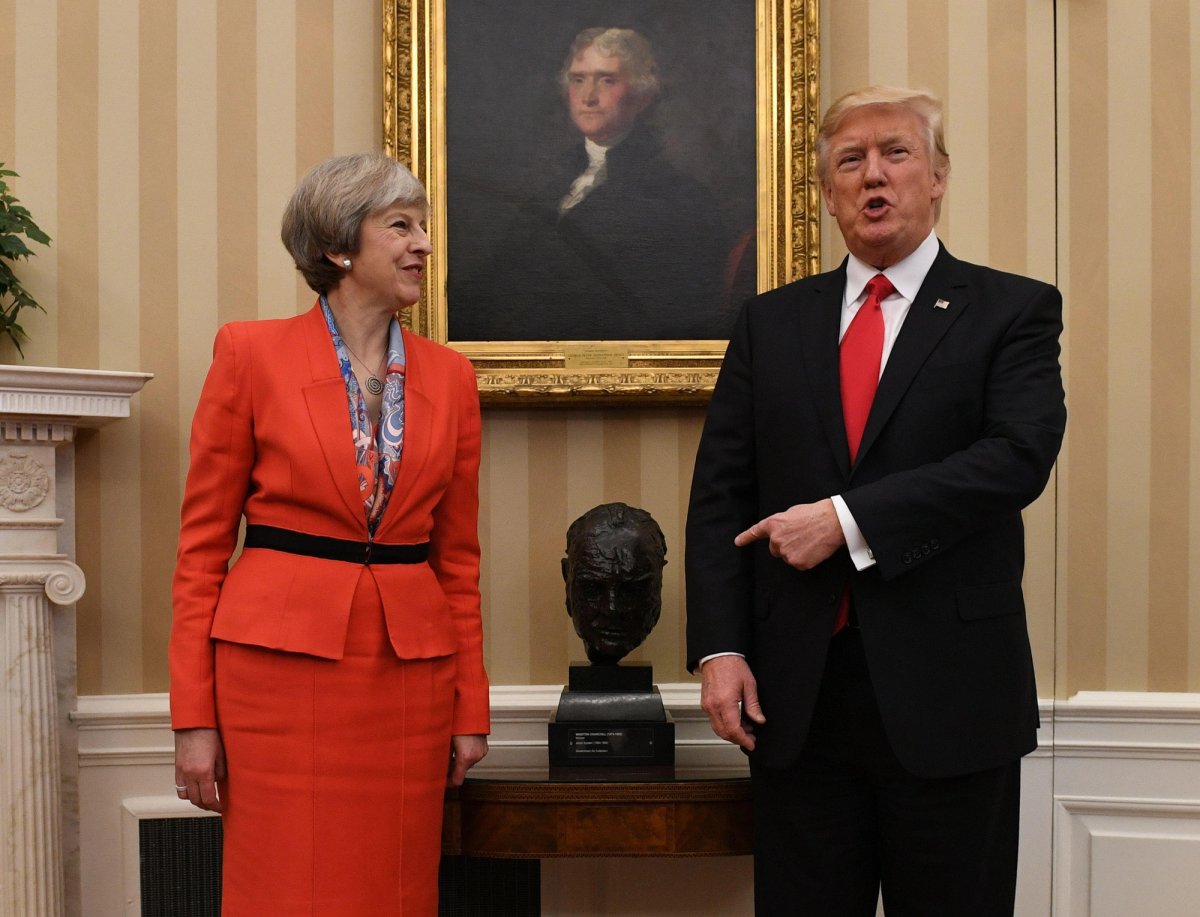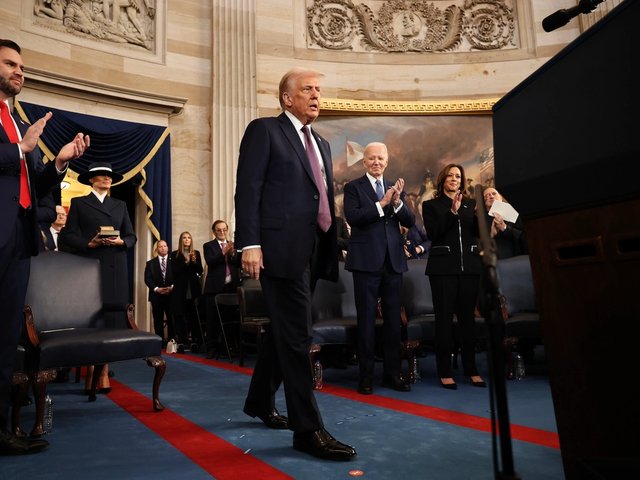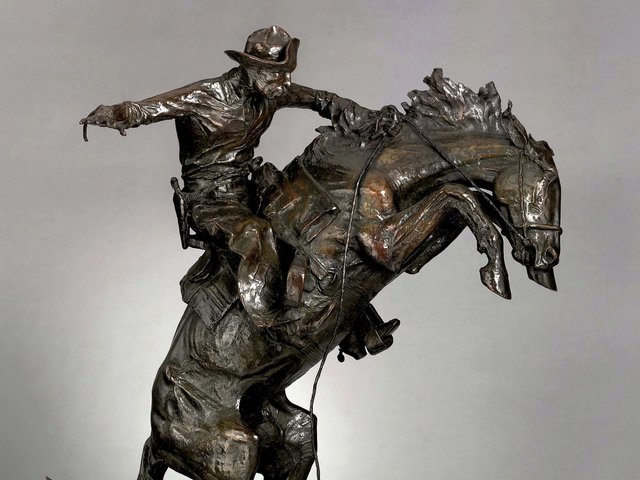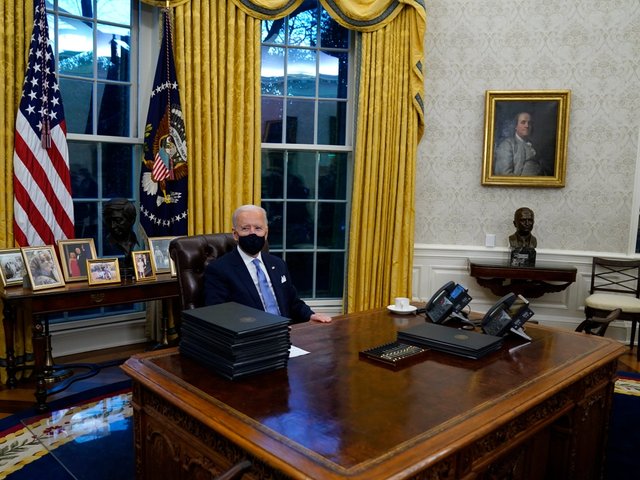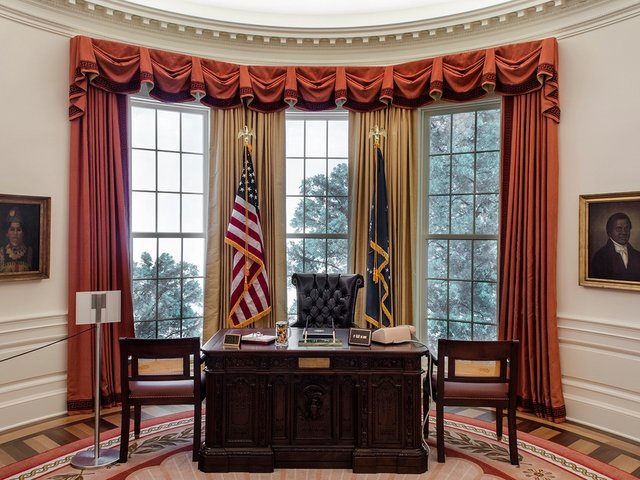The newly inaugurated US president Donald Trump has put a controversial bust of Winston Churchill back on display in the Oval Office at the White House. The bronze bust by the British American artist Jacob Epstein (1880-1959) has been at the centre of considerable confusion and debate in recent years, having been removed and reinstated by successive US presidents. However, in photographs published yesterday by the Wall Street Journal (WSJ), it appears to have been returned to a table near the office’s fireplace.
Confusingly, the bust in question is one of two identical works by Epstein, both of which have spent time in the White House. The first, a gift from the Wartime Friends of Winston Churchill to president Lyndon Johnson, arrived in 1965 and is now part of the White House collection. The second was loaned by the UK Government Art Collection (GAC) to then-president George W Bush in 2001, while the first was being restored.
At the end of president Bush’s term in 2009, the GAC’s bust was removed from the Oval Office and moved to the British Ambassador’s Residence. The White House collection’s version, now fully restored, was placed just outside the White House’s Treaty Room.
A snub to the UK government?
The apparent decision by former president Barack Obama not to return the collection’s bust to the Oval Office was considered by some to be a snub to the UK government. Boris Johnson, then mayor of London and now a former UK prime minister, wrote at the time that the move could be considered “a symbol of the part-Kenyan president’s ancestral dislike of the British empire”.
However, a statement published by The White House in 2012 refuted this. Dan Pfeiffer, a former assistant to the president and senior advisor, wrote: “The idea put forward…that President Obama returned the Churchill bust or refused to display the bust because of antipathy towards the British is completely false and an urban legend.”
Next, in 2017, the bust belonging to the GAC was returned to the Oval Office by then-president Donald Trump—reportedly hand delivered by then-UK prime minister Theresa May. Trump described the return of Churchill as a “great honour”.
When removed again four years later by Joe Biden, the UK government took a rather more relaxed view than during Obama’s administration. “The Oval Office is the president’s private office, and it’s up to the president to decorate it as he wishes,” then-prime minister Boris Johnson’s official spokesperson told The Guardian.
Now, following Trump’s second inauguration, the GAC’s sculpture appears once again to have been returned to the president’s office. The White House collection’s example, meanwhile, is reportedly still within the private quarters of the official residence.
What other works has Trump reinstated?
Trump has also returned the image of the US’s seventh president, Andrew Jackson—a figure remembered for his presidency, which included the forced relocation of Native American tribes through the Indian Removal Act, and his links to the slave trade—to the walls of the Oval Office. During Trump’s first tenure, a portrait of Jackson on loan from the US Naval Academy was on display. This time, the WSJ reports, the Jackson portrait has been drawn from the White House art collection.
A sculpture entitled The Bronco Buster by Frederic Remington (around 1895), which also graced Trump’s first Oval Office, sits under the Jackson painting. According to the White House Historical Association, the sculpture became “the most popular small American bronze sculpture of the 19th century and is still admired today”.
Also in Trump’s newly decorated office, a portrait of the first president George Washington hangs over the office fireplace. The work is flanked by portraits of Alexander Hamilton, the country’s first treasury secretary, and Thomas Jefferson, the third US president.
A bust of Martin Luther King Jr and a portrait of the 18th-century scientist and statesman Benjamin Franklin, both installed by Biden, remain. However, busts of the activists Rosa Parks and Cesar Chavez, also displayed by Biden, alongside a portrait of the longest serving US president, Franklin D. Roosevelt, do not appear in images from WSJ.


